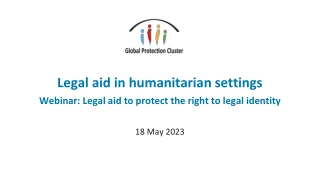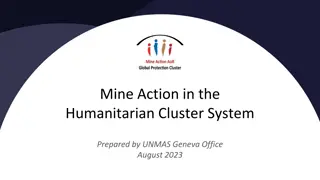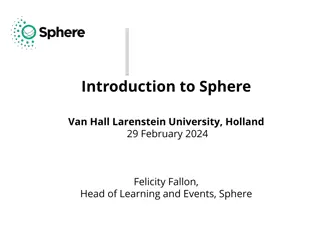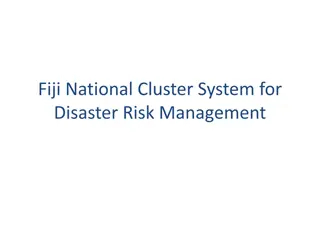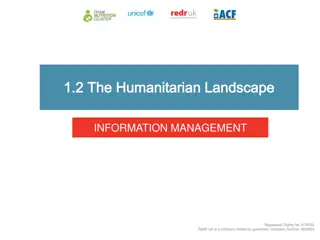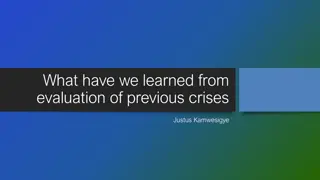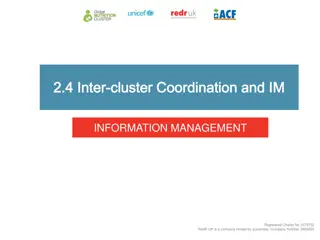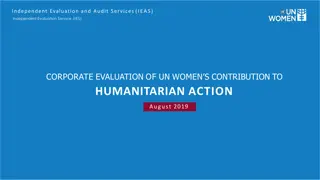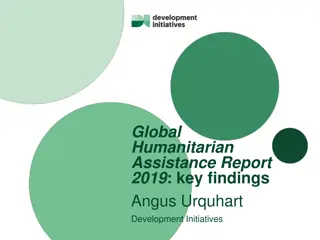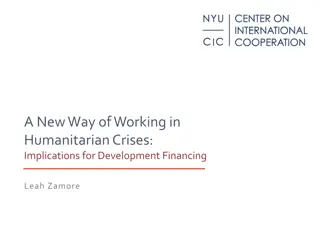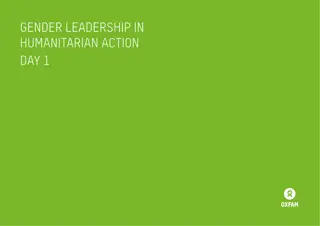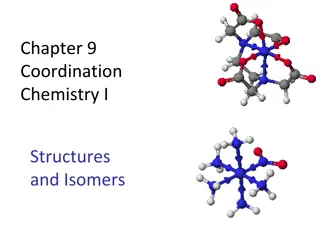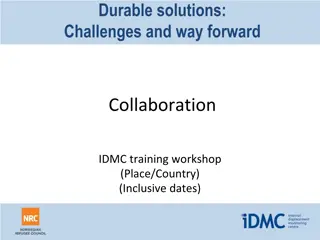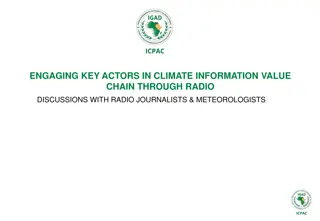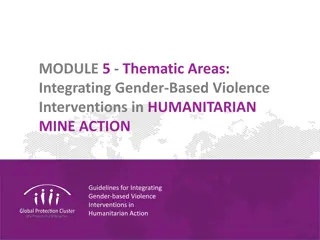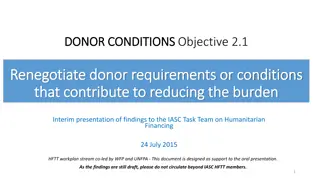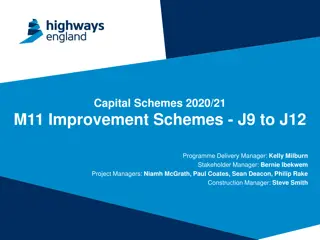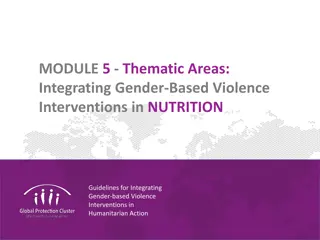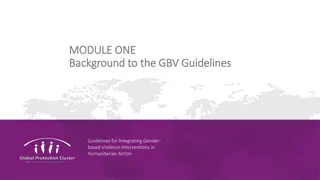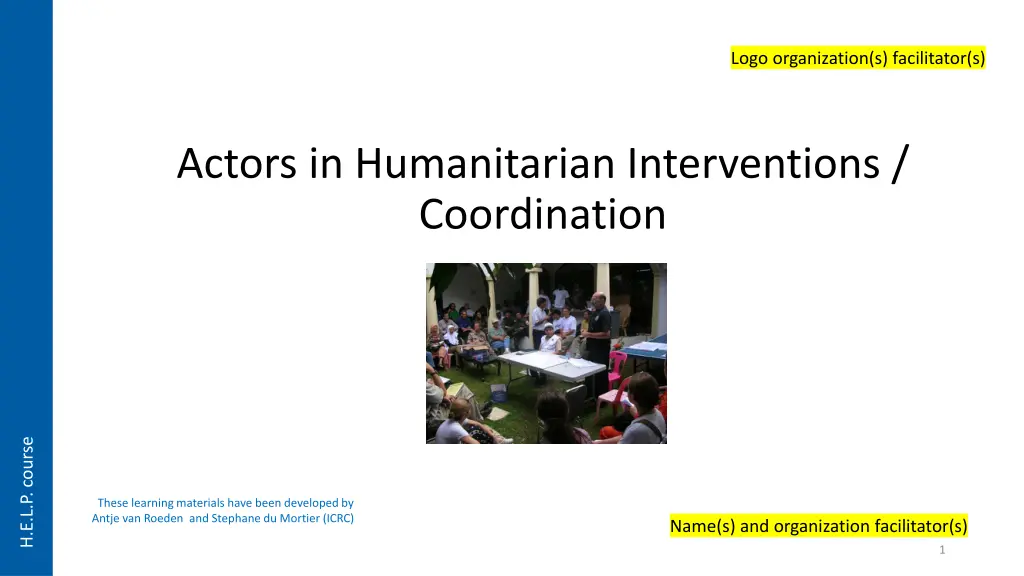
Humanitarian Interventions and Coordination: Stakeholder Analysis and Learning Materials
Explore the actors and organizations involved in humanitarian interventions, their roles, and responsibilities through the H.E.L.P. course. The learning materials cover identifying similarities and differences between various actors, understanding coordination systems in crises, and stakeholder analysis for effective mission planning and response. Developed by Antje van Roeden and Stephane du Mortier from ICRC, these resources provide insights into the diverse stakeholders, including UN agencies, Red Cross movements, national authorities, NGOs, and more, essential in humanitarian efforts.
Download Presentation

Please find below an Image/Link to download the presentation.
The content on the website is provided AS IS for your information and personal use only. It may not be sold, licensed, or shared on other websites without obtaining consent from the author. If you encounter any issues during the download, it is possible that the publisher has removed the file from their server.
You are allowed to download the files provided on this website for personal or commercial use, subject to the condition that they are used lawfully. All files are the property of their respective owners.
The content on the website is provided AS IS for your information and personal use only. It may not be sold, licensed, or shared on other websites without obtaining consent from the author.
E N D
Presentation Transcript
Logo organization(s) facilitator(s) Actors in Humanitarian Interventions / Coordination H.E.L.P. course These learning materials have been developed by Antje van Roeden and Stephane du Mortier (ICRC) Name(s) and organization facilitator(s) 1
Objectives Be able to identify similarities and differences between actors involved in humanitarian interventions identify your role and responsibilities within the prevailing coordination system in an acute / protracted crisis H.E.L.P. course 2
Actors humanitarian interventions Affected civilian population UN agencies, e.g. UNHCR, WFP, WHO, UNICEF, OCHA Red Cross and Red Crescent Movement (ICRC, IFRC, National Societies) National and local authorities Actors implicated in the political management of conflicts, e.g. UN security council, States involved in negotiations International and national NGOs Diaspora groups Arms carriers, e.g. national armed forces, opposition groups, international armed forces , peace keeping forces Private sector H.E.L.P. course Donors Religious institutions The media 4
Organizational entities for which aid provision is their primary mandate Diaspora groups Military forces The international Red cross and Red Crescent Movement Donors International NGOs Groups that play a critical role in humanitarian response but humanitarian action is not their core function Host governments Affected communities UN humanitarian agencies Humanitarian arms of regional intergovernmental organisations H.E.L.P. course H.E.L.P. course National NGOs Private- sector entities Religious institutions Source: ALNAP, State of the Humanitarian System, 2015 5
Stakeholder analysis Mission Expertise & Resources Mandate Actor Policies & Procedures Legal framework Principles for action Strategies H.E.L.P. course NB: Affected populations are a stakeholder 6 Source: Pierre Perrin Guerre et Sant Publique, 2017
This map is developed for: Stakeholder analysis What does (s)he Think and feel? What really counts Major pre-occupations Worries, aspirations What does (s)he See ? Environment Friend What the market offers What does (s)he Hear ? What influences her/him What does (s)he Say ? Attitude in public Appearance What does (s)he Do ? Behaviour towards others Affected populations Health authorities and system NGOs, Red Cross What does (s)he Know ? Technically Health system, security situation Authorities, Red Cross, NGOs Community What does (s)he Want ? Priority needs Previous achievements H.E.L.P. course Pain Fears Frustrations Obstacles Gain Wants / needs Dreams / hopes Strengths Expertise, experience Successes Lessons learnt 7
Spectrum of coordination 3. Cooperative coordination 4. Collaborative activities 2.Communication 5. Merger H.E.L.P. course 1. Complete autonomy 8 Source: Background paper ALNAP 30thAnnual Meeting, 2015
Examples of coordination mechanism National / Regional specific coordination mechanisms Cluster Approach (Result of UN Humanitarian Reform, 2005 OCHA o Part of the UN Secretariat responsible for bringing humanitarian actors to ensure a coherent approach to emergencies o Three types of pooled funds managed by OCHA: CERF, CHFs, and ERFs IASC (Inter-Agency Standing Committee) o Forum for coordination, policy development and decision-making involving key UN and non-UN humanitarian partners ICVA (International council of voluntary agencies) Agreements between WHO and UNICEF for a variety of health problems (diarrhoeal diseases, malnutrition, .) Seville agreement (1997), o Framework for cooperation for the international RC/RC Movement H.E.L.P. course 9
Cluster approach H.E.L.P. course 10
Panel discussion Date: .. Purpose: To bring out similarities and differences between the actors, how they work together and what coordination mechanisms are in use. Represented in the panel are names organizations/institutions (4-5) Groupwork Preparation by you using the stakeholder analysis framework 1 You have 2 minutes to present the organization /institution before the panel discussion starts H.E.L.P. course 11

